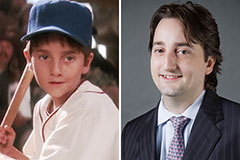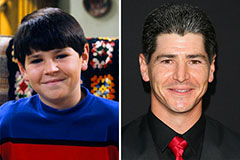Dementia Fall Risk Fundamentals Explained
Table of Contents6 Simple Techniques For Dementia Fall RiskNot known Facts About Dementia Fall RiskThe Of Dementia Fall RiskNot known Details About Dementia Fall Risk The Facts About Dementia Fall Risk Uncovered
The FRAT has three areas: drop threat condition, danger element checklist, and action plan. An Autumn Danger Condition includes data concerning background of current drops, medicines, emotional and cognitive condition of the individual - Dementia Fall Risk.If the client ratings on a danger aspect, the matching number of points are counted to the client's fall danger score in the box to the far. If a person's loss threat score totals 5 or higher, the person goes to high risk for falls. If the patient ratings only four points or lower, they are still at some danger of dropping, and the nurse ought to use their finest professional evaluation to handle all fall risk factors as component of a holistic care strategy.
These basic strategies, as a whole, aid create a risk-free environment that reduces unintentional falls and defines core safety nets for all patients. Signs are crucial for people at danger for drops. Doctor need to recognize who has the condition, for they are responsible for implementing activities to advertise person security and avoid falls.
How Dementia Fall Risk can Save You Time, Stress, and Money.
For instance, wristbands must consist of the client's last and given name, day of birth, and NHS number in the UK. Details should be printed/written in black versus a white background. Just red shade should be used to signify unique person standing. These suggestions follow present growths in patient identification (Sevdalis et al., 2009).
Things that are too much may need the individual to connect or ambulate needlessly and can potentially be a risk or add to drops. Aids avoid the patient from going out of bed without any type of help. Nurses react to fallers' call lights extra quickly than they do to lights launched by non-fallers.
Aesthetic problems can considerably cause falls. Hip pads, when put on correctly, may lower a hip fracture when fall occurs. Keeping the beds closer to the floor lowers the threat of falls and serious injury. Positioning the cushion on the floor considerably reduces autumn danger in some medical care settings. Low beds are developed to decrease the range a person falls after moving out of bed.
The 10-Second Trick For Dementia Fall Risk
Clients that are tall and with weak leg muscles that attempt to remain on the bed from a standing placement are most likely to fall onto the bed due to the fact that it's as well low for them to decrease themselves securely. Likewise, if a high patient efforts to get up from a reduced bed without support, the person is most likely to drop back down onto the bed or miss the bed and fall onto the floor.
They're developed to advertise prompt rescue, not to stop drops from bed. Audible alarm systems can additionally advise the person not to obtain up alone. The use of alarm systems can additionally be a replacement for physical restrictions. Aside from bed alarms, boosted guidance for high-risk clients likewise might aid protect against falls.

Clients with an evasion gait boost autumn opportunities dramatically. To minimize autumn danger, shoes should be with a little to no heel, thin soles with slip-resistant step, and sustain the ankle joints. Suggest client to make use of nonskid socks to avoid the feet from sliding upon standing. Encourage individuals to wear proper, well-fitting shoesnot nonskid socks for ambulation.
Dementia Fall Risk - The Facts
Patients, specifically older grownups, have lowered visual capability. Lighting an unfamiliar atmosphere assists raise exposure if the person have to get up at night. In a research study, homes with ample lights report less falls (Ramulu et al., 2021). Improvement in lights in your home may minimize fall rates in older grownups (Dementia Fall Risk). Making use of stride belts by all healthcare companies can promote safety and security when assisting individuals with transfers from bed to chair.

Caretakers work for guaranteeing a safe and secure, secured, and risk-free setting. Research studies demonstrated very low-certainty evidence that caretakers minimize autumn danger in acute treatment hospitals and only moderate-certainty that choices like video clip monitoring can minimize sitter use without boosting autumn threat, suggesting that caretakers are not as beneficial as originally believed (Greely et al., 2020).
The 6-Second Trick For Dementia Fall Risk

Raised physical conditioning reduces the threat for falls and restricts injury that is suffered when fall takes place. Land and water-based exercise programs may be similarly beneficial on equilibrium and gait and thus reduce the danger for falls. Water exercise might contribute a positive advantage on balance and stride for women 65 years and older.
Chair Surge Exercise is a simple sit-to-stand exercise that aids enhance the muscle mass in the upper legs and buttocks and boosts movement and freedom. The goal is to do Chair Increase workouts without using hands as the customer becomes stronger. See sources area for a comprehensive guideline on how to execute Chair Surge exercise.
 Romeo Miller Then & Now!
Romeo Miller Then & Now! Charlie Korsmo Then & Now!
Charlie Korsmo Then & Now! Jennifer Love Hewitt Then & Now!
Jennifer Love Hewitt Then & Now! Michael Fishman Then & Now!
Michael Fishman Then & Now! Pierce Brosnan Then & Now!
Pierce Brosnan Then & Now!